
Roots
To truly comprehend the magnificent expanse of textured hair, one must first settle into the quiet understanding of its very beginnings, the hidden structures that give it form and spirit. It is an invitation to peer beyond the visible, to sense the deep currents of biology and heritage that flow through each strand. We seek not merely to dissect, but to appreciate the intricate architecture beneath the surface, revealing how each curl, coil, or wave holds within it a unique story, a delicate blueprint guiding its growth and character. This foundational knowledge allows us to approach care with a gentle wisdom, recognizing the innate splendor and specific needs of textured hair.
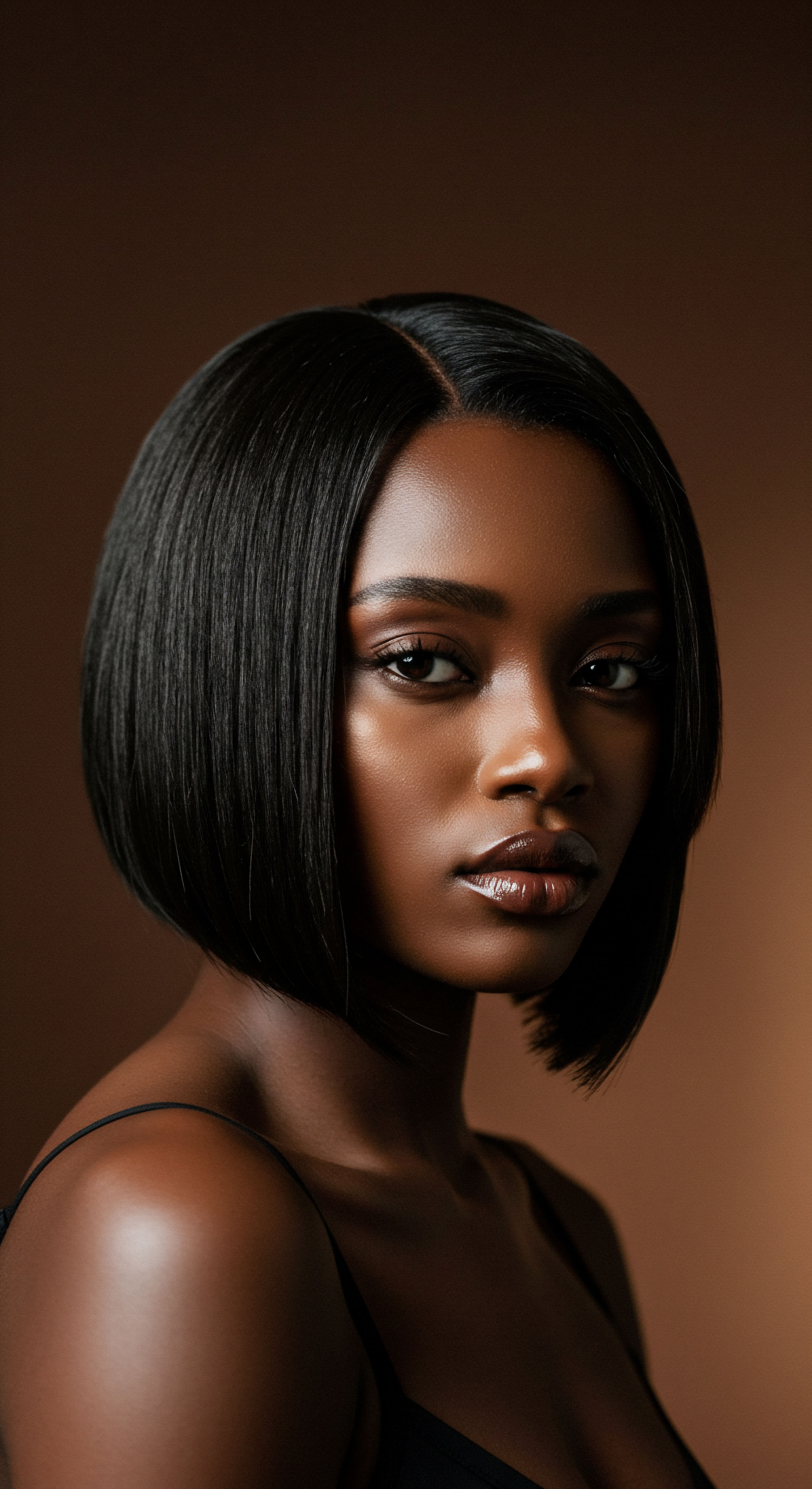
Hair Anatomy and Physiology Specific to Textured Hair
The visible hair strand, while seemingly simple, conceals a complex biological design. At its core, textured hair, particularly that of African descent, exhibits distinct anatomical features that set it apart. The hair shaft, rather than being perfectly round, tends to possess an elliptical or even flat cross-section. This unique shape influences the curl pattern, causing the hair to spiral and coil as it grows.
The cuticle, the outermost protective layer composed of overlapping scales, is often more raised in textured hair. This characteristic, while contributing to a desired volume, also means the cuticle can be more prone to lifting, leading to increased porosity and a propensity for moisture to escape.
Beneath the cuticle lies the Cortex, the primary determinant of hair strength and elasticity. In textured hair, the distribution of keratin proteins within the cortex can be uneven, contributing to areas of inherent weakness along the bends and curves of the strand. This structural reality means that textured hair, despite its apparent resilience, can be more susceptible to breakage under mechanical stress.
The innermost layer, the medulla, may be fragmented or absent in certain textured hair types, further affecting the strand’s overall integrity and thermal conductivity. Understanding these microscopic realities allows for a more attuned approach to handling and conditioning, favoring methods that preserve the cuticle and support the cortex.
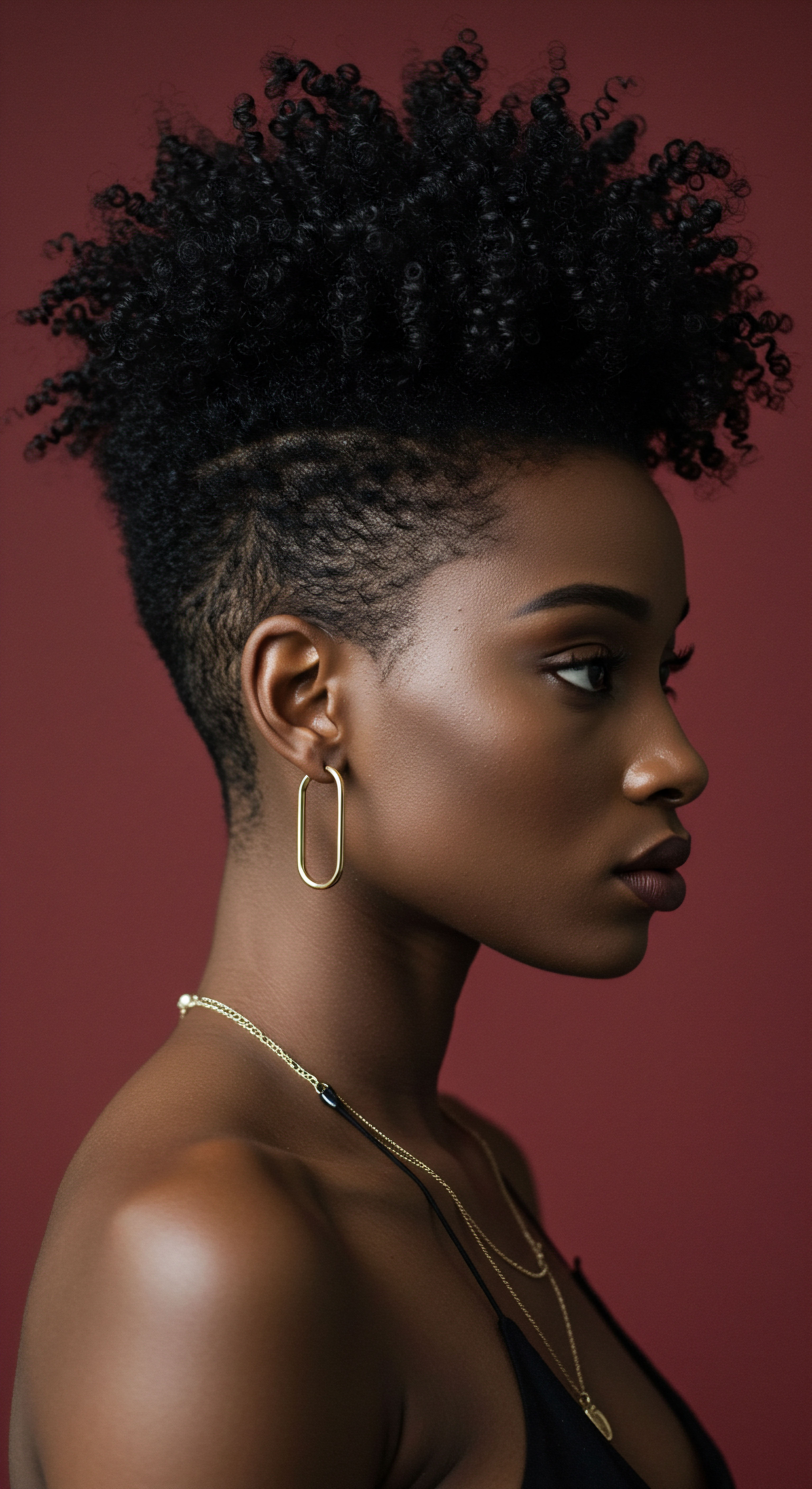
Textured Hair Classification Systems
The myriad expressions of textured hair have inspired various classification systems, each attempting to categorize the diverse spectrum of curl patterns. While no single system perfectly captures the individual variations, they offer a helpful framework for understanding general characteristics and guiding care. The most widely recognized system often categorizes hair into types 1 (straight), 2 (wavy), 3 (curly), and 4 (coily), with further sub-classifications (A, B, C) indicating increasing tightness of the curl.
- Type 2 Hair ❉ Ranges from a loose wave to a more defined S-shape, often lying closer to the head.
- Type 3 Hair ❉ Characterized by distinct, springy curls that can range from loose spirals to tight corkscrews.
- Type 4 Hair ❉ Exhibits very tight, often Z-patterned coils, sometimes so tight they are not immediately apparent, creating a dense, voluminous appearance.
Within these broad categories, factors such as strand density (the number of hair strands per square inch of scalp), strand thickness (the diameter of an individual hair strand), and porosity (the hair’s ability to absorb and retain moisture) play equally significant roles. For instance, two individuals with the same curl type might experience vastly different care needs due to variations in their hair’s porosity or density. Acknowledging this individual specificity, beyond mere curl pattern, fosters a more personal and effective hair care journey.
The intrinsic structure of textured hair, from its elliptical cross-section to the intricate layering of its cuticle and cortex, dictates its unique needs and inherent vulnerabilities.

The Essential Lexicon of Textured Hair
A language exists for textured hair, a vocabulary that deepens our understanding and allows for more precise communication about its care. Familiarity with these terms transforms abstract concepts into tangible elements of a care routine.
| Term Porosity |
| Significance The hair's capacity to absorb and hold moisture, influenced by cuticle integrity. Low porosity hair resists moisture entry but retains it well; high porosity hair readily absorbs but quickly loses moisture. |
| Term Elasticity |
| Significance The hair's ability to stretch and return to its original shape without breaking. Good elasticity indicates healthy, well-hydrated hair. |
| Term Density |
| Significance The number of individual hair strands on the scalp. High density hair appears thick and full, while low density hair appears thinner. |
| Term Coil Pattern |
| Significance The specific shape and tightness of the curl, often described using numerical and alphabetical classifications (e.g. 4C). |
| Term Understanding these terms provides a foundation for personalized care. |
Beyond these technical descriptors, there are terms born from lived experience, like “shrinkage,” which describes the apparent shortening of textured hair due to its curl pattern when dry, even though its actual length is much greater. This phenomenon, while natural, often shapes styling choices and product preferences. Acknowledging and appreciating this lexicon empowers individuals to speak with confidence about their hair and to seek out resources that truly resonate with their specific needs.

Hair Growth Cycles and Influencing Factors
Hair growth unfolds in a cyclical dance, a continuous process of renewal that is remarkably consistent across all hair types, yet with subtle variations influenced by genetics and environment. Each hair follicle moves through three primary phases ❉ anagen (growth), catagen (transition), and telogen (resting).
- Anagen Phase ❉ This is the active growth period, lasting from two to seven years, determining the maximum length a hair can achieve. For textured hair, this phase can sometimes be shorter compared to other hair types, which influences its potential for length.
- Catagen Phase ❉ A brief transitional period, lasting about two to three weeks, during which hair growth ceases and the follicle shrinks.
- Telogen Phase ❉ The resting phase, lasting around three months, where the hair prepares to shed, making way for new growth.
Several factors can disrupt this delicate rhythm. Nutritional deficiencies, stress, hormonal shifts, and certain medical conditions can prematurely push hair into the telogen phase, leading to increased shedding. For textured hair, mechanical stress from styling practices, such as excessive pulling or tight manipulation, can also contribute to early shedding or even damage the follicle over time.
Environmental elements, including humidity levels and air quality, can also subtly alter the hair’s hydration and overall health, influencing its ability to complete its growth cycle robustly. A holistic perspective recognizes that healthy hair growth is not solely a matter of external application, but a reflection of internal well-being and mindful care.
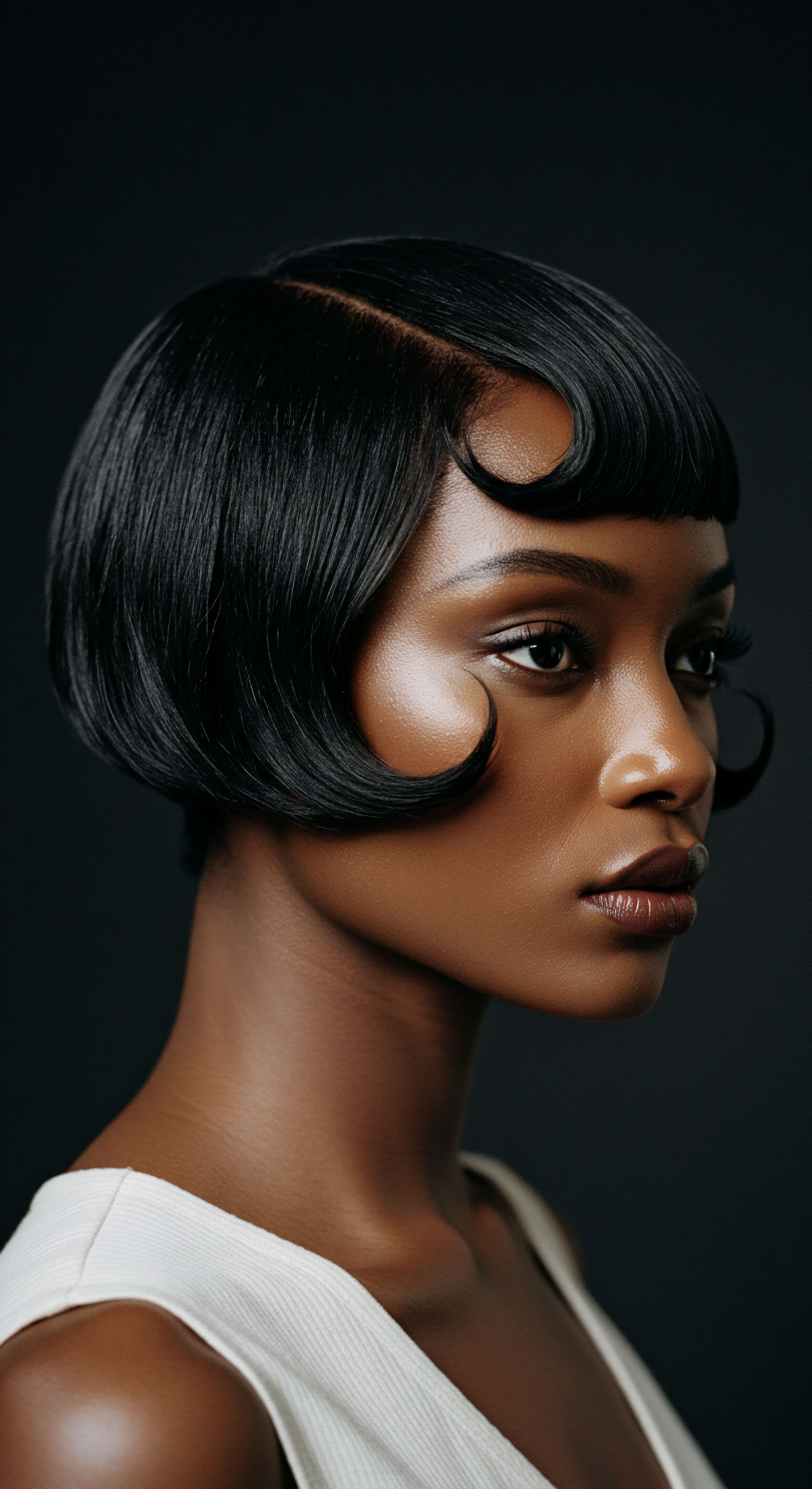
Ritual
As we move from the elemental understanding of hair’s intrinsic nature, we arrive at the practical wisdom of its daily and periodic care. This space acknowledges the thoughtful practices that shape our hair’s appearance and vitality, a blend of tradition and technique. Here, we explore the methods and tools that allow us to honor our hair’s unique qualities, moving beyond simple application to a more intentional interaction. Our exploration here offers gentle guidance, recognizing that every touch, every product choice, contributes to the ongoing story of our hair’s well-being.
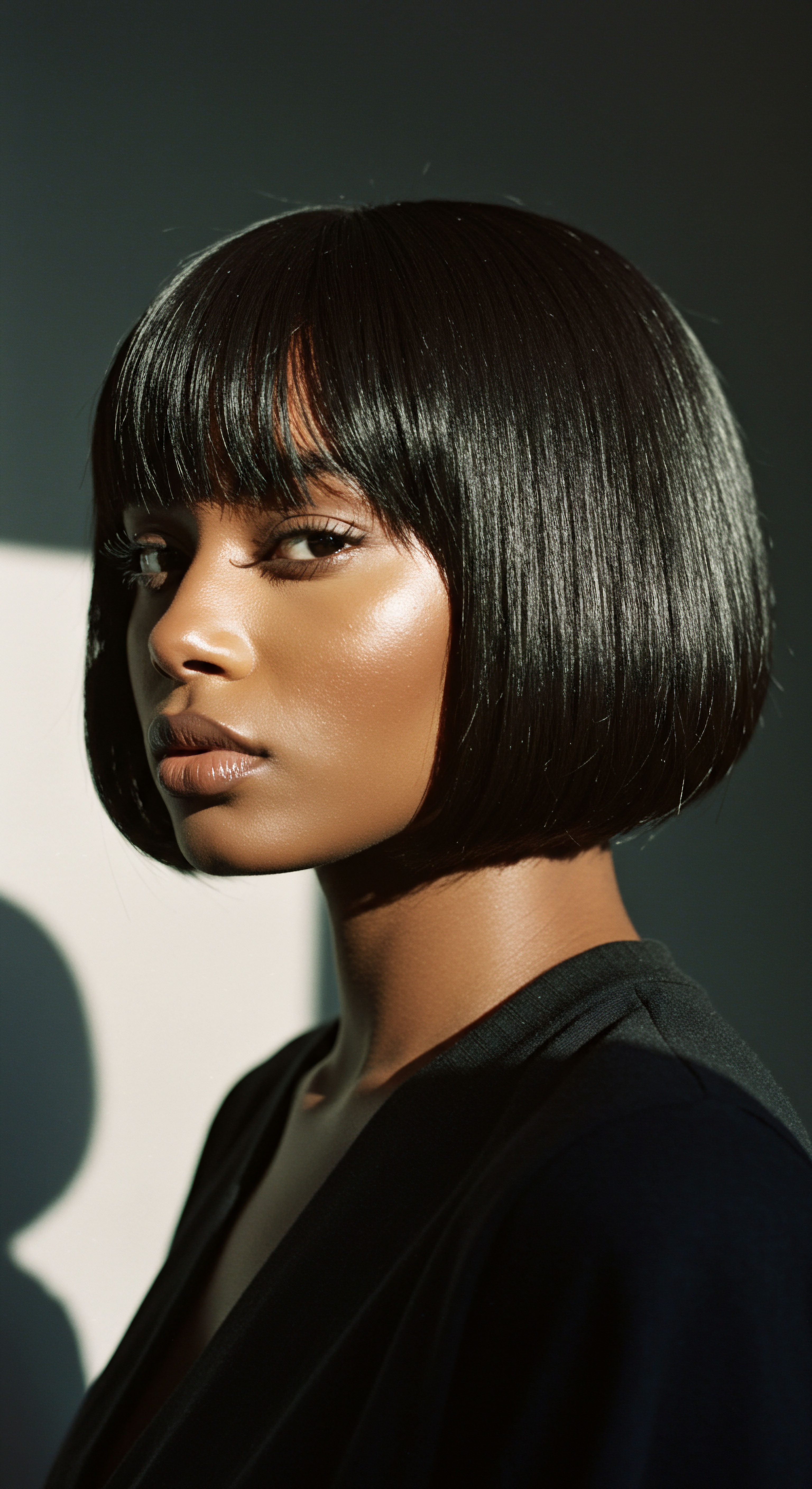
Protective Styling Encyclopedia
Protective styles serve as a shield, safeguarding delicate strands from daily manipulation and environmental stressors. These styles, often deeply rooted in cultural heritage, minimize breakage and promote length retention by tucking away hair ends. Braids, twists, and cornrows are foundational to this practice, offering a respite for the hair shaft from external friction and dryness.
The efficacy of these styles, however, hinges on their proper execution. When installed too tightly, they can exert excessive tension on the scalp, leading to discomfort and, in more serious instances, conditions like traction alopecia.
Beyond the common forms, protective styling encompasses a wide array of options, each with its own considerations.
- Box Braids ❉ Individual braids that can be installed with or without extensions, allowing for versatility in length and volume. Their longevity depends on the tension and maintenance.
- Twists ❉ Similar to braids but created by twisting two sections of hair around each other, offering a softer tension.
- Cornrows ❉ Braids that lie flat against the scalp, often forming intricate patterns. Their tightness is a critical factor for scalp health.
- Wigs and Weaves ❉ While offering significant versatility and a complete break from manipulation for the natural hair underneath, the foundational braiding or netting beneath must be gentle, and the scalp must be kept clean to avoid irritation or fungal issues.
The key to successful protective styling lies in balance ❉ protecting the hair without compromising the scalp. Regular cleansing of the scalp while in protective styles, moisturizing the exposed parts of the hair, and ensuring the styles are not worn for excessive periods are all critical elements of a healthy approach.

Natural Styling and Definition Techniques
Celebrating the natural texture of hair involves a repertoire of techniques designed to enhance curl definition and vibrancy. These methods work with the hair’s inherent pattern, rather than attempting to alter it, allowing for a freedom of expression that honors its organic form. Wash-and-gos, twist-outs, and braid-outs are among the most popular avenues for achieving defined, voluminous results.
A successful wash-and-go relies on adequate hydration and proper product application to clump curls and coils. This involves saturating the hair with water, applying a leave-in conditioner, and then a styling gel or cream while the hair is still wet, allowing the natural curl pattern to set as it dries. Twist-outs and braid-outs, conversely, involve sectioning the hair, applying products, twisting or braiding the sections, allowing them to dry completely, and then carefully unraveling them to reveal stretched, defined waves or curls.
The choice of product plays a pivotal supporting role in these techniques. Lightweight moisturizers, curl-defining creams, and gels formulated for textured hair are often employed to provide hold without stiffness, and moisture without excessive residue. The practice of defining natural hair is a dialogue with one’s strands, a patient process of discovery to discern what methods and products allow its truest form to shine.
Protective styles and natural definition techniques, when executed with care, shield hair from daily wear while celebrating its intrinsic curl.

Wigs and Hair Extensions Mastery
Wigs and hair extensions offer a realm of creative possibility, allowing for significant transformations in appearance without altering one’s natural hair. They provide a means to experiment with different lengths, colors, and textures, or to give natural hair a complete rest from styling. However, their application and maintenance demand careful consideration to preserve the health of the scalp and the hair beneath.
When considering weaves or sew-ins, the foundation braids must be installed with minimal tension to prevent traction alopecia, a form of hair loss caused by repetitive pulling on the hair follicles. The weight of the extensions themselves also requires attention; overly heavy additions can strain the natural hair. For glued-in extensions, the adhesive must be applied and removed with professional care to avoid damage to the hair shaft or scalp irritation.
Wigs, particularly those worn frequently, necessitate regular scalp cleansing and moisturizing to prevent dryness, itchiness, or product accumulation. Proper ventilation of the scalp underneath the wig is also important.
The art of mastering wigs and extensions lies not just in their aesthetic appeal, but in the diligent, gentle care of the hair and scalp that supports them. This includes ensuring breathability, maintaining cleanliness, and providing periodic breaks to allow the natural hair to breathe freely.
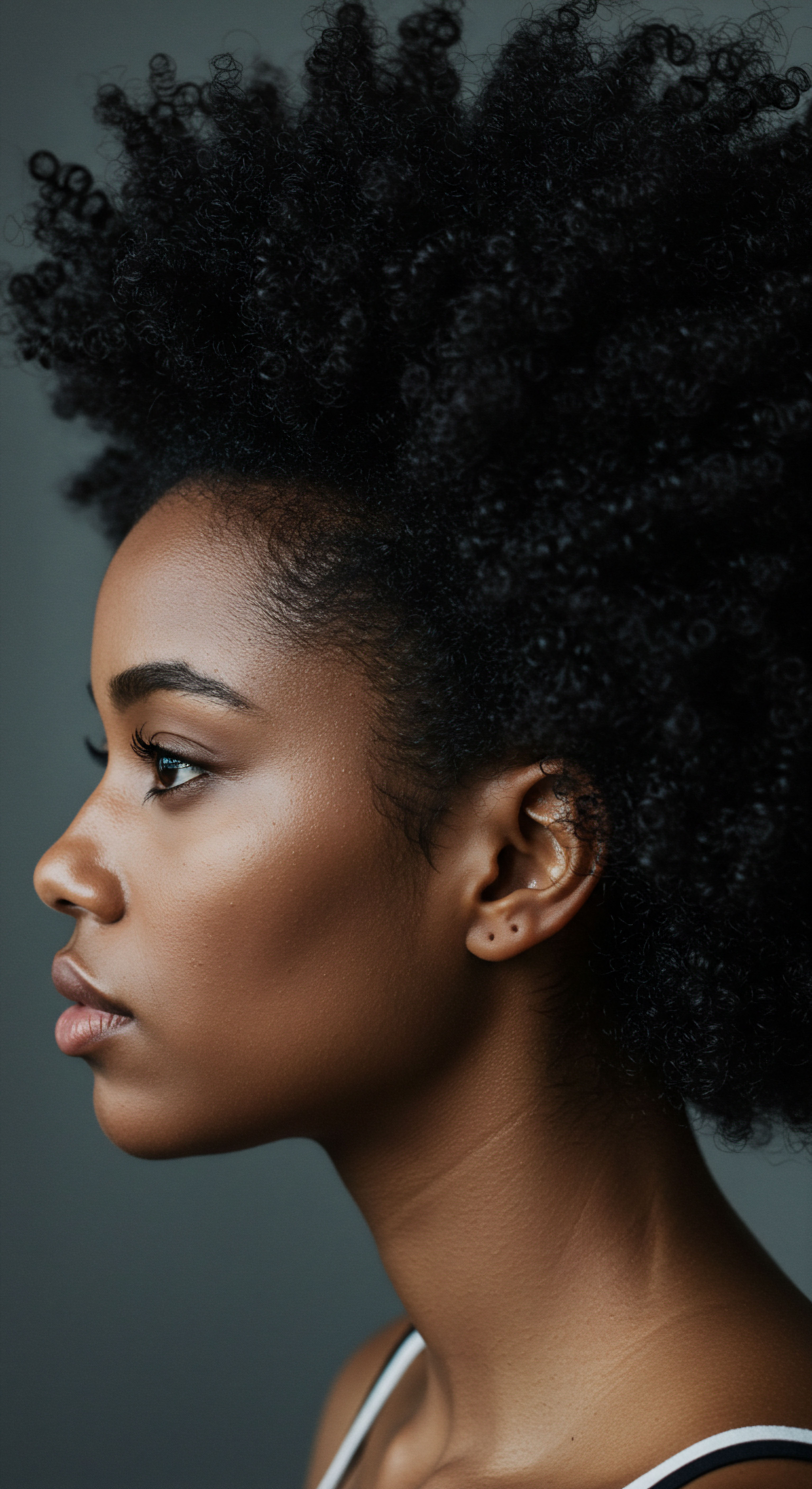
Heat Styling and Thermal Reconditioning with a Safety First Approach
The allure of smooth, straightened hair or perfectly sculpted curls often leads to the use of heat styling tools. Flat irons, curling wands, and blow dryers can temporarily alter the hair’s natural pattern, offering a different aesthetic. However, the application of heat, especially at high temperatures, carries inherent risks for textured hair, which is already prone to dryness and breakage due to its structural characteristics.
Thermal reconditioning, or chemical straightening, involves the use of strong chemical agents alongside heat to permanently alter the hair’s disulfide bonds, resulting in a straight texture. This process, while offering long-lasting straightness, significantly compromises the hair’s structural integrity, making it more fragile and susceptible to damage.
A safety-first approach to heat styling prioritizes protection and moderation.
- Temperature Control ❉ Using the lowest effective heat setting is paramount. Textured hair generally requires lower temperatures than straight hair to achieve desired results.
- Heat Protectants ❉ Applying a quality heat protectant before any thermal styling creates a barrier that minimizes direct heat damage to the hair shaft.
- Frequency ❉ Limiting the frequency of heat application allows the hair to recover and reduces cumulative damage.
- Professional Application for Chemical Processes ❉ Thermal reconditioning should always be performed by experienced professionals who understand the delicate balance required to minimize damage.
Unchecked, repeated heat exposure can lead to irreversible damage, known as heat damage, where the hair loses its natural curl pattern and elasticity, becoming brittle and prone to breakage.

The Complete Textured Hair Toolkit
Equipping oneself with the right tools transforms hair care from a chore into a thoughtful ritual. Each instrument serves a specific purpose, designed to work harmoniously with the unique properties of textured hair.
The foundation of any textured hair toolkit includes wide-tooth combs, detangling brushes, and spray bottles. Wide-Tooth Combs are essential for gently detangling wet hair, minimizing snagging and breakage. Detangling brushes, often with flexible bristles, work through knots with less friction. A spray bottle filled with water or a leave-in conditioner is invaluable for refreshing curls and adding moisture without soaking the hair.
For styling, hair clips or sectioning clips aid in managing hair in smaller, more workable portions. Satin or silk bonnets and pillowcases are non-negotiable for nighttime protection, reducing friction and preserving moisture during sleep. Microfiber towels, gentler than traditional terry cloth, absorb excess water without roughing up the cuticle, thereby reducing frizz. Investing in these specialized tools reflects a deep respect for textured hair and its particular needs, paving the way for healthier strands and a more serene care experience.
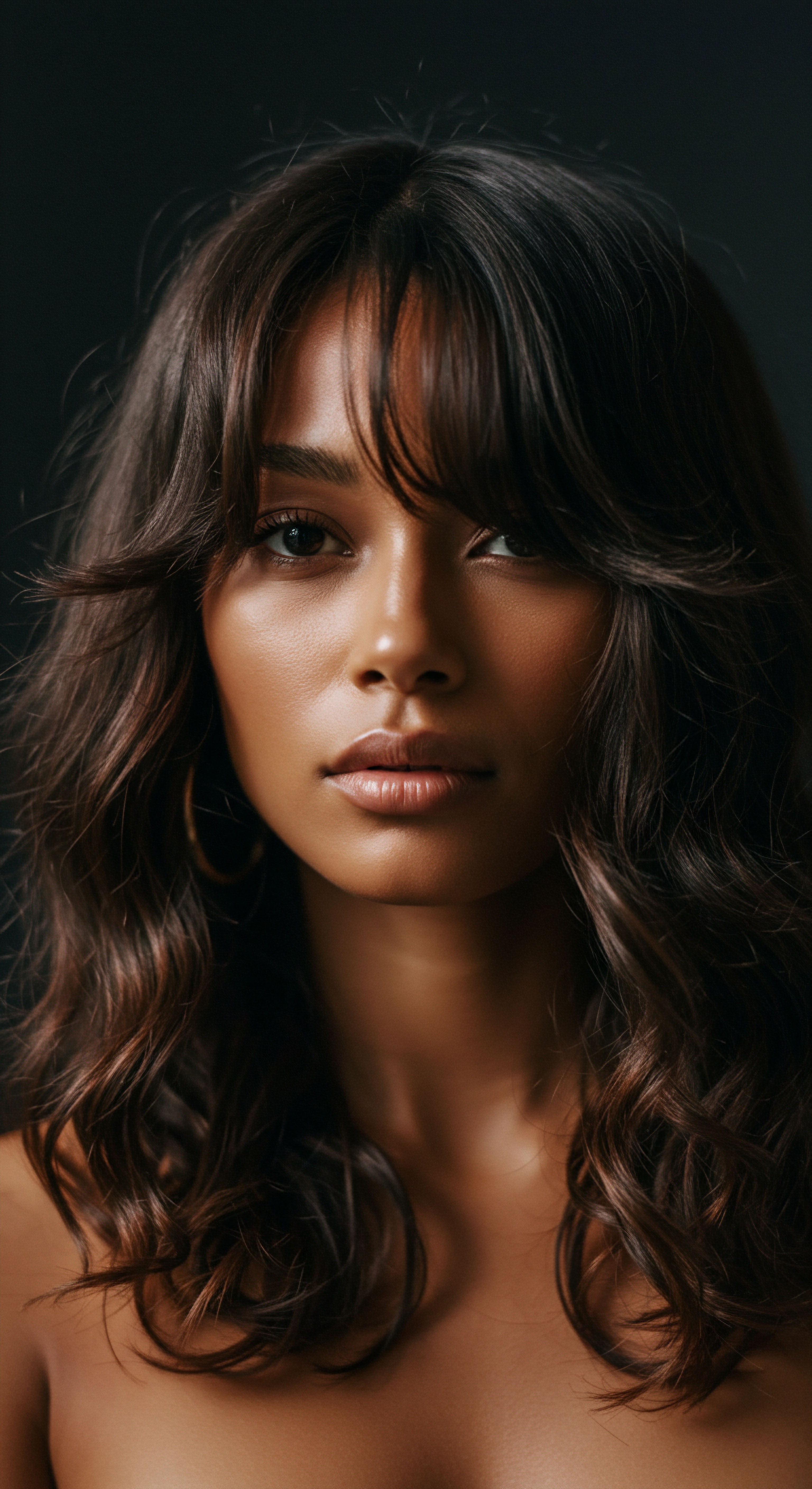
Relay
Stepping into this space, we acknowledge the deeper currents that flow beneath the surface of hair care, where science, cultural practice, and the subtle nuances of well-being converge. Our focus here shifts to a more profound exploration of how cultural hair practices intersect with scalp health and hair retention, moving beyond the immediate and into the interconnected web of biological, social, and psychological factors. We consider not just the visible effects, but the quiet conversations between tradition and scientific understanding, uncovering insights that challenge conventional perspectives and invite a more informed approach.

Building Personalized Textured Hair Regimens
The creation of a truly supportive textured hair regimen moves beyond generic advice, recognizing that each head of hair holds a distinct identity. It is a process of attentive observation and thoughtful adaptation, tailoring practices to the specific porosity, density, and elasticity of one’s strands. A personalized regimen typically begins with a gentle cleansing routine, using sulfate-free shampoos that purify without stripping natural oils. This is followed by a deeply hydrating conditioner, chosen to address the hair’s moisture needs.
Beyond cleansing and conditioning, the layering of products, often termed the “LOC” (Liquid, Oil, Cream) or “LCO” (Liquid, Cream, Oil) method, helps seal in moisture, particularly for hair prone to dryness.
- Liquid ❉ Water or a water-based leave-in conditioner provides initial hydration.
- Oil ❉ A light oil (like jojoba or grapeseed) helps seal the moisture, preventing its rapid escape.
- Cream ❉ A thicker cream or butter offers a further layer of moisture and definition.
The sequence can be adjusted based on individual hair’s absorption patterns and moisture retention capabilities. Listening to the hair’s responses – its feel, its appearance, its elasticity – guides this iterative process, leading to a regimen that truly supports its health and vitality.

The Nighttime Sanctuary Essential Sleep Protection and Bonnet Wisdom
The hours of sleep, often overlooked in a daily routine, hold significant power for hair retention and scalp health, particularly for textured hair. The friction generated between hair and cotton pillowcases can lead to tangles, breakage, and the absorption of precious moisture, leaving strands dry and vulnerable. This is where the wisdom of nighttime protection, often embodied by the humble bonnet, becomes paramount.
A Satin or Silk Bonnet creates a smooth, frictionless environment for the hair, allowing curls and coils to glide without resistance. This simple barrier significantly reduces mechanical damage, preserves moisture, and helps maintain the integrity of styled hair, extending the life of protective styles and wash-and-gos alike. Beyond bonnets, satin or silk pillowcases offer a similar benefit, providing a gentle surface for those who prefer not to wear a bonnet or as an additional layer of protection. This practice is a quiet ritual of care, ensuring that the restorative hours of sleep contribute to, rather than detract from, hair health.
Nighttime hair protection, particularly with satin or silk coverings, plays a quiet yet powerful role in preserving moisture and preventing mechanical damage to textured hair.

Ingredient Deep Dives for Textured Hair Needs
Understanding the components within our hair products transforms product selection from a guessing game into an informed decision. For textured hair, which often craves moisture and gentle care, certain ingredients stand out as allies, while others may be less beneficial.
| Category Moisturizers |
| Beneficial Ingredients Glycerin, Hyaluronic Acid, Aloe Vera, Shea Butter, Coconut Oil, Jojoba Oil |
| Less Favorable Ingredients Heavy mineral oils, Petrolatum (can cause buildup if not cleansed well) |
| Category Cleansers |
| Beneficial Ingredients Decyl Glucoside, Coco-Betaine, Sodium Lauroyl Methyl Isethionate (mild surfactants) |
| Less Favorable Ingredients Sodium Lauryl Sulfate, Sodium Laureth Sulfate (harsh sulfates) |
| Category Proteins |
| Beneficial Ingredients Hydrolyzed Wheat Protein, Hydrolyzed Rice Protein (in moderation for strength) |
| Less Favorable Ingredients Excessive protein (can cause stiffness and breakage if hair is not balanced with moisture) |
| Category Informed ingredient choices support textured hair's unique hydration and strength requirements. |
The presence of harsh sulfates in shampoos, for instance, can strip textured hair of its already limited natural oils, leading to dryness and frizz. Conversely, humectants like glycerin draw moisture from the air, providing hydration, while emollients like shea butter and natural oils seal that moisture in. Protein, when used judiciously, can strengthen the hair shaft, but an excess can lead to stiffness and brittleness. Learning to decipher ingredient lists empowers individuals to select products that truly align with their hair’s specific needs, fostering a more harmonious relationship with their care regimen.

Textured Hair Problem Solving Compendium
Even with the most dedicated care, textured hair can present unique challenges. Addressing these concerns requires a nuanced understanding of their origins, often stemming from a confluence of genetic predispositions, environmental factors, and care practices.
One prevalent concern is Traction Alopecia, a form of hair loss caused by chronic pulling on the hair follicles. This often arises from tight hairstyles, such as braids, cornrows, or ponytails worn for extended periods, or from the weight of extensions. A study from South Africa, for instance, reported a prevalence of traction alopecia as high as 37% among women presenting to a primary care center in Cape Town, underscoring the widespread impact of styling practices on scalp health. Early recognition of thinning at the hairline or areas of tension, coupled with a loosening of styles, can prevent permanent scarring.
Another common issue is dryness and breakage. Due to its coiled structure, natural oils produced by the scalp struggle to travel down the entire hair shaft, leaving the ends particularly vulnerable. This structural reality means that regular, deep conditioning and consistent moisturizing are not merely recommendations, but essential practices for maintaining integrity.
Beyond these, certain cultural practices, while deeply ingrained, can present unexpected health implications. A Boston University study revealed that Black women who used hair relaxers more than twice a year or for over five years experienced a 50% increase in uterine cancer risk. This finding introduces a critical dimension to the conversation around hair care, highlighting how practices aimed at altering hair texture for societal acceptance or ease of styling can carry significant, unforeseen health burdens. Up to 95% of adult Black women in the U.S.
reported ever using hair relaxers, underscoring the widespread exposure to these products. This information compels us to question deeply held norms and to seek alternatives that prioritize holistic well-being above all else.

Holistic Influences on Hair Health
The vitality of our hair and scalp is a reflection of our overall well-being, a sensitive barometer of internal and external harmony. A truly comprehensive approach to hair retention and scalp health extends beyond topical applications, embracing the profound impact of nutrition, stress management, and general physical health.
What internal factors shape the resilience of our hair?
Our diet plays a fundamental role. Hair, composed primarily of protein, requires a steady supply of amino acids, vitamins, and minerals for optimal growth and strength. Deficiencies in iron, zinc, or biotin, for example, can manifest as thinning or brittle strands. Adequate hydration is also crucial, as water supports the cellular processes that nourish the hair follicle.
Stress, too, casts a long shadow over hair health. Chronic stress can disrupt the hair growth cycle, leading to increased shedding, a condition known as telogen effluvium. Practices that quiet the mind and soothe the spirit, such as meditation, gentle movement, or simply finding moments of quietude, can indirectly contribute to a healthier scalp environment.
Sleep, often undervalued, allows the body to repair and regenerate, processes vital for robust hair growth. A holistic view acknowledges that radiant hair is not a superficial pursuit, but a vibrant indicator of a life lived in gentle balance.

Reflection
As we draw this exploration to a close, we are left with a quiet appreciation for the intricate dance between cultural practice, personal care, and the very essence of hair’s well-being. The journey has revealed that textured hair, with its unique structure and profound cultural resonance, calls for a depth of understanding that extends beyond the superficial. It beckons us to consider the whispers of history, the truths of science, and the gentle urgings of self-care, all woven into a tapestry of daily ritual. The path to serene strands and a thriving scalp is not a destination, but a continuous conversation, an ongoing discovery of what truly allows our hair to flourish in its most authentic, vibrant form.
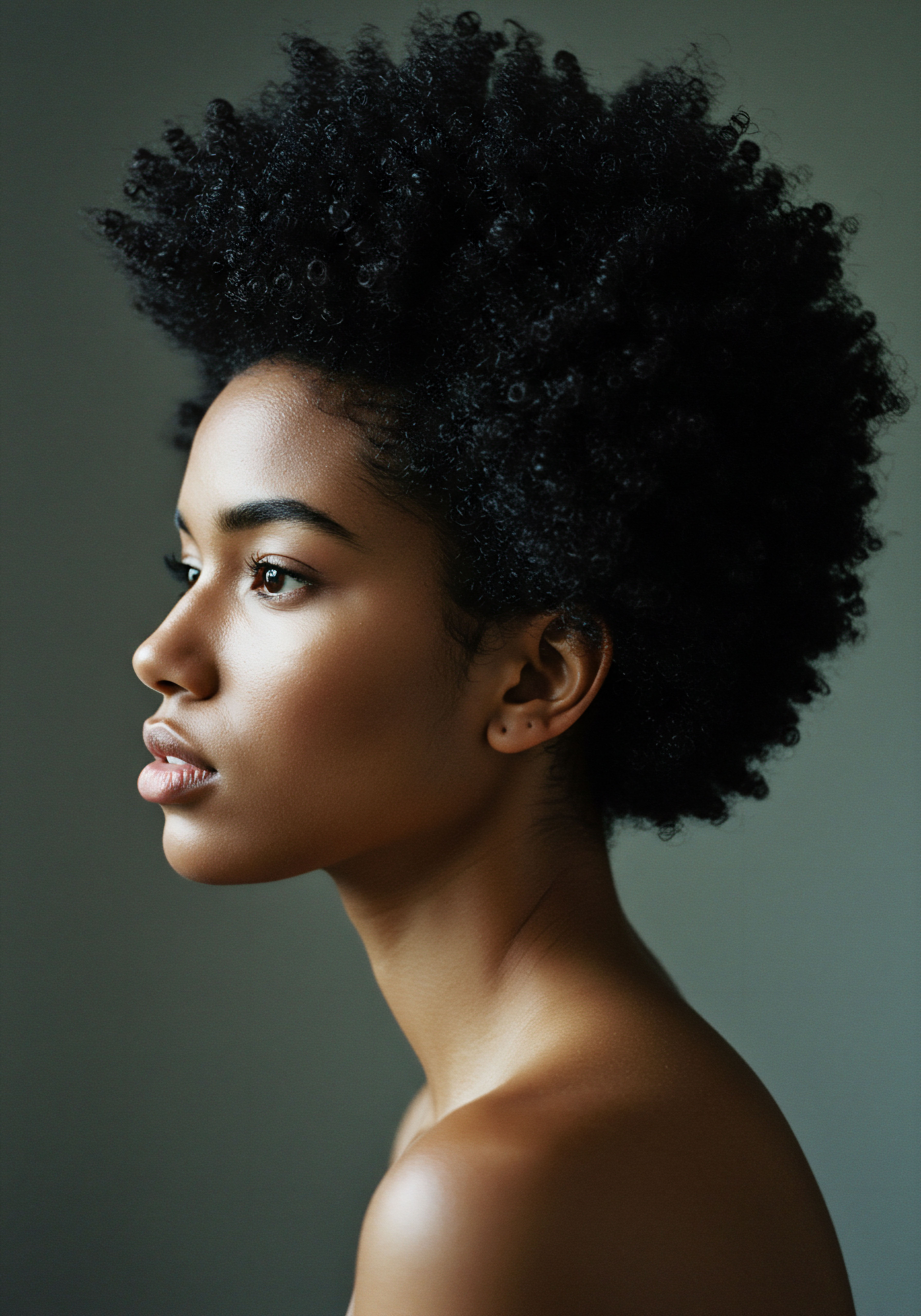
References
- Otberg, N. et al. (2018). Traction alopecia ❉ the root of the problem. Clinical, Cosmetic and Investigational Dermatology, 11, 155-161.
- Al-Hammadi, A. et al. (2025). Prevalence and Associated Factors of Traction Alopecia in Women in North Sudan ❉ A Community-Based, Cross-Sectional Study. International Journal of Environmental Research and Public Health, 22(3), 188.
- Gathers, R. C. & Pierre-Louis, A. (2009). Hair Care Practices in African-American Patients. Seminars in Cutaneous Medicine and Surgery, 28(2), 103-108.
- Sharquie, K. E. & Al-Rubaye, A. M. (2020). Traction Alopecia ❉ Clinical and Cultural Patterns. Journal of Clinical and Aesthetic Dermatology, 13(1), 38-41.
- Khumalo, N. P. et al. (2010). ‘Relaxers’ damage hair ❉ evidence from amino acid analysis. Journal of the American Academy of Dermatology, 62(3), 402-408.
- Khumalo, N. P. et al. (2007). Hairdressing is associated with scalp disease in African schoolchildren. British Journal of Dermatology, 157(1), 106-109.
- Dadzie, O. E. et al. (2015). Correlates of hair loss in adult women of African descent in London, U.K. ❉ findings of a cross-sectional study. British Journal of Dermatology, 173(2), 433-439.
- Rucker Wright, D. et al. (2011). Hair care practices and their association with scalp and hair disorders in African American girls. Journal of the American Academy of Dermatology, 64(2), 253-262.
- Etemesi, B. A. (2007). Impact of hair relaxers in women in Nakuru, Kenya. International Journal of Dermatology, 46(Suppl 1), 23-25.
- Khumalo, N. P. et al. (2013). Hair and scalp disorders in women of African descent ❉ an overview. British Journal of Dermatology, 169(Suppl 1), 1-13.
- Loussouarn, G. et al. (2001). African hair growth parameters. British Journal of Dermatology, 145(2), 294-298.
- Balogun, O. D. (2024, October 10). What to Know About the Connection Between Hair Relaxers and Uterine Cancer. Health Matters – NewYork-Presbyterian.
- Rocha, J. F. et al. (2020). Effects of chemical straighteners on the hair shaft and scalp. Anais Brasileiros de Dermatologia, 95(6), 720-727.
- Adetula, A. O. et al. (2023). A Community-Based Study of Hair Care Practices, Scalp Disorders and Psychological Effects on Women in a Suburban Town in Southwest Nigeria. MRIMS Journal of Health Sciences, 4(3), 133-138.
- Rao, A. A. K. et al. (2016). Effect of cultural factors on hair fall. MRIMS Journal of Health Sciences, 4(3), 136-138.